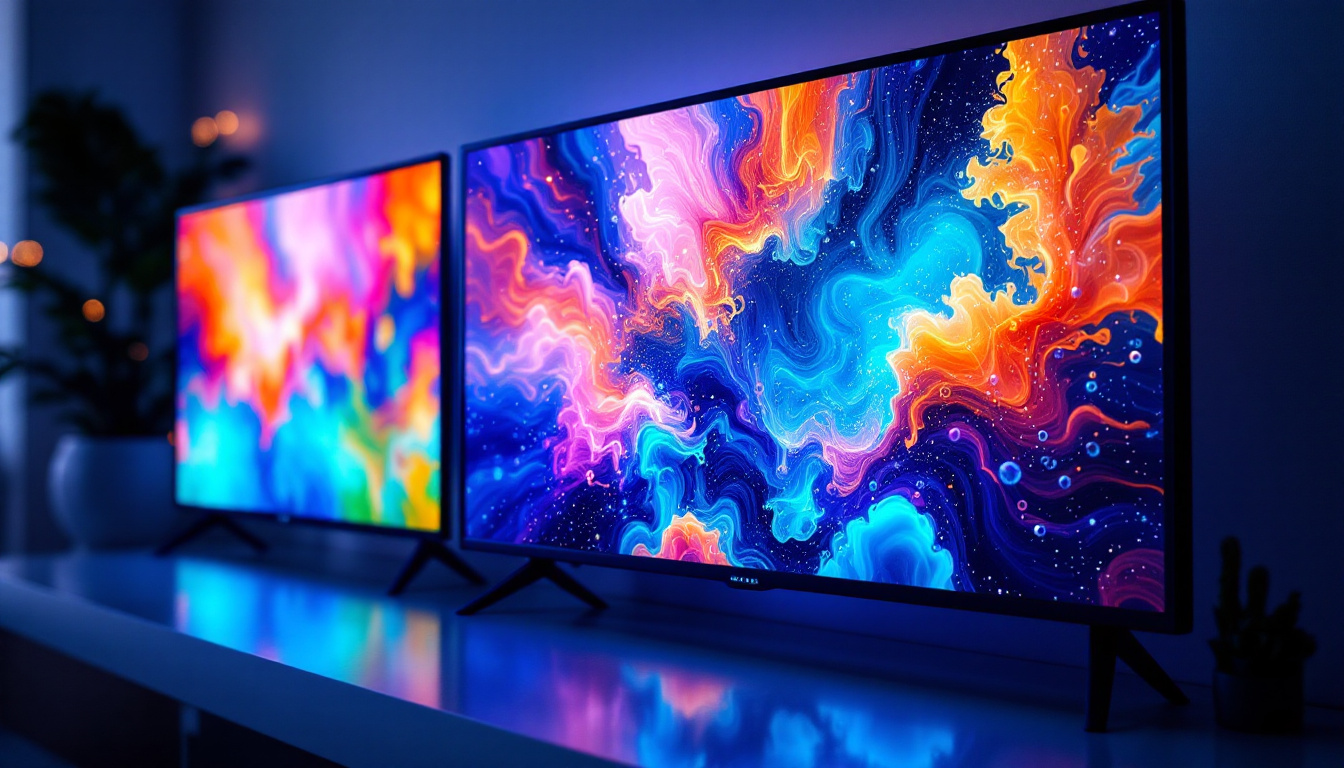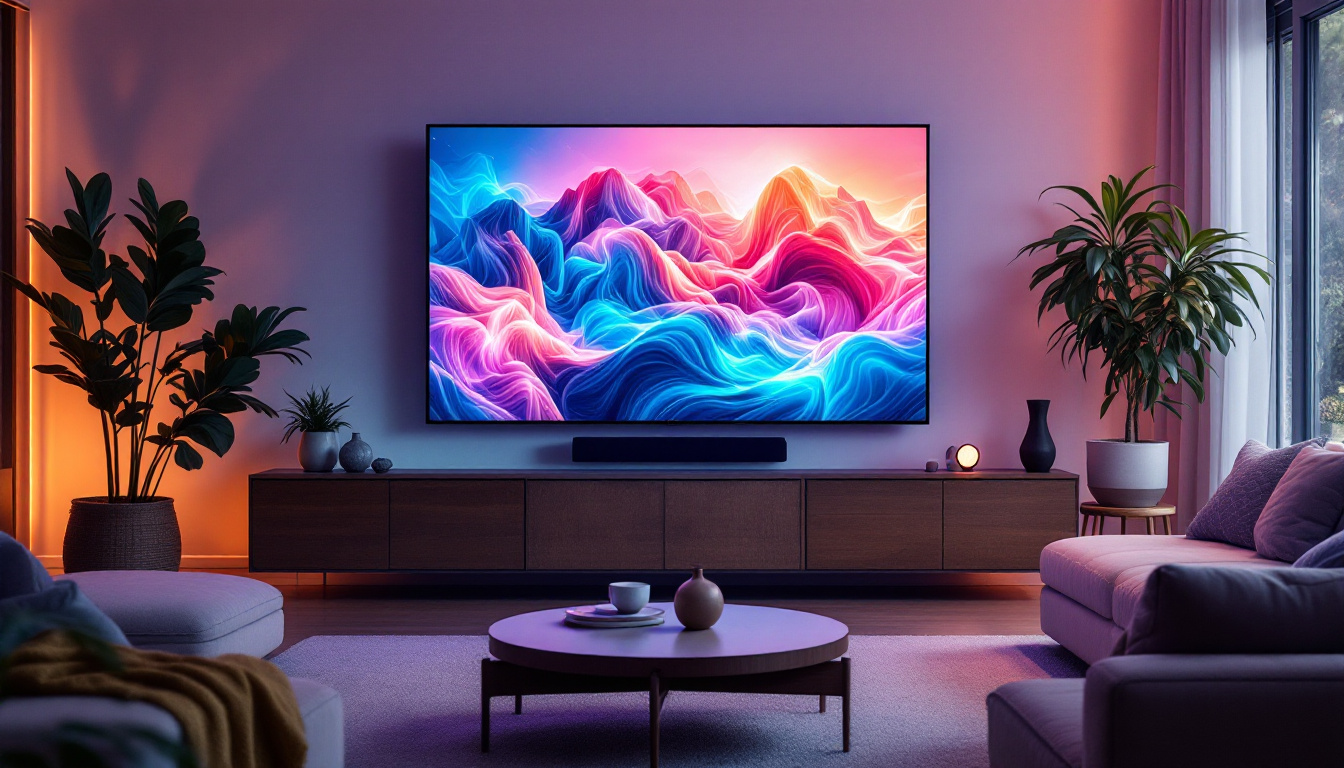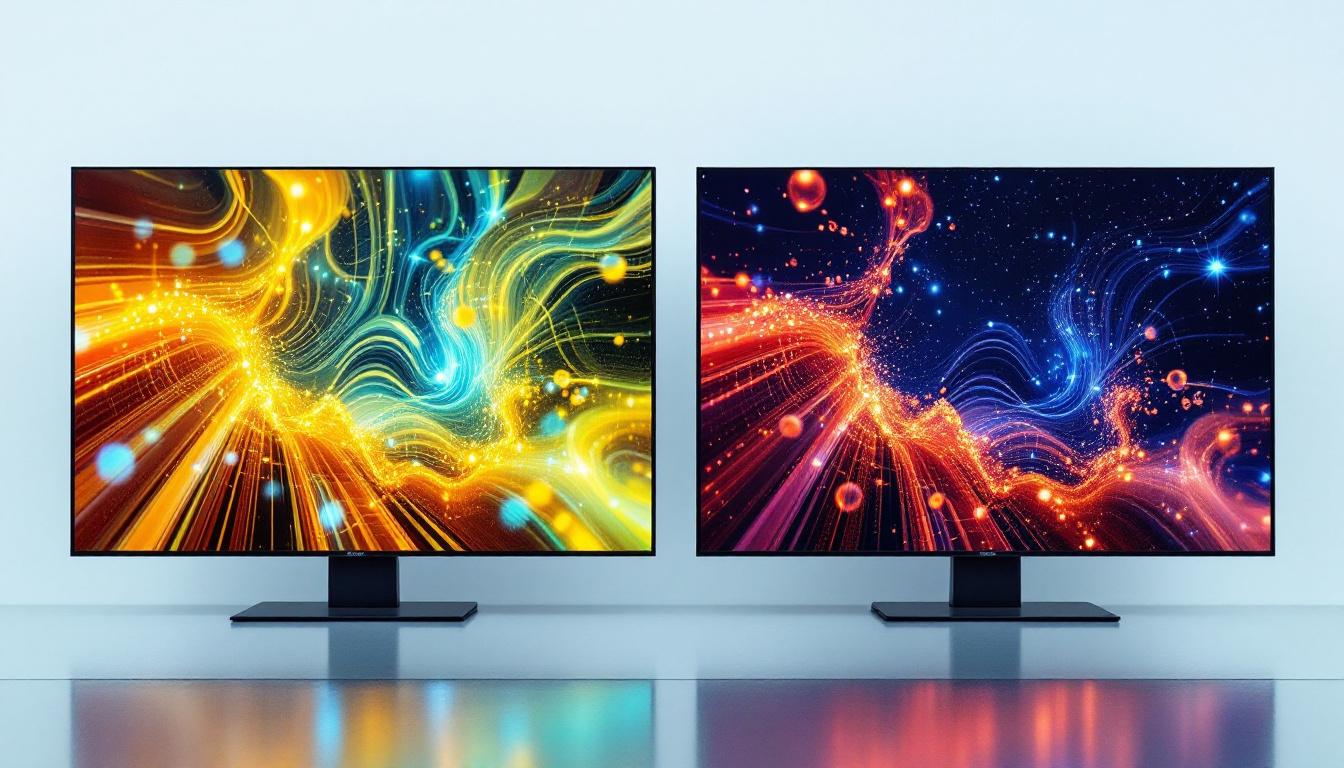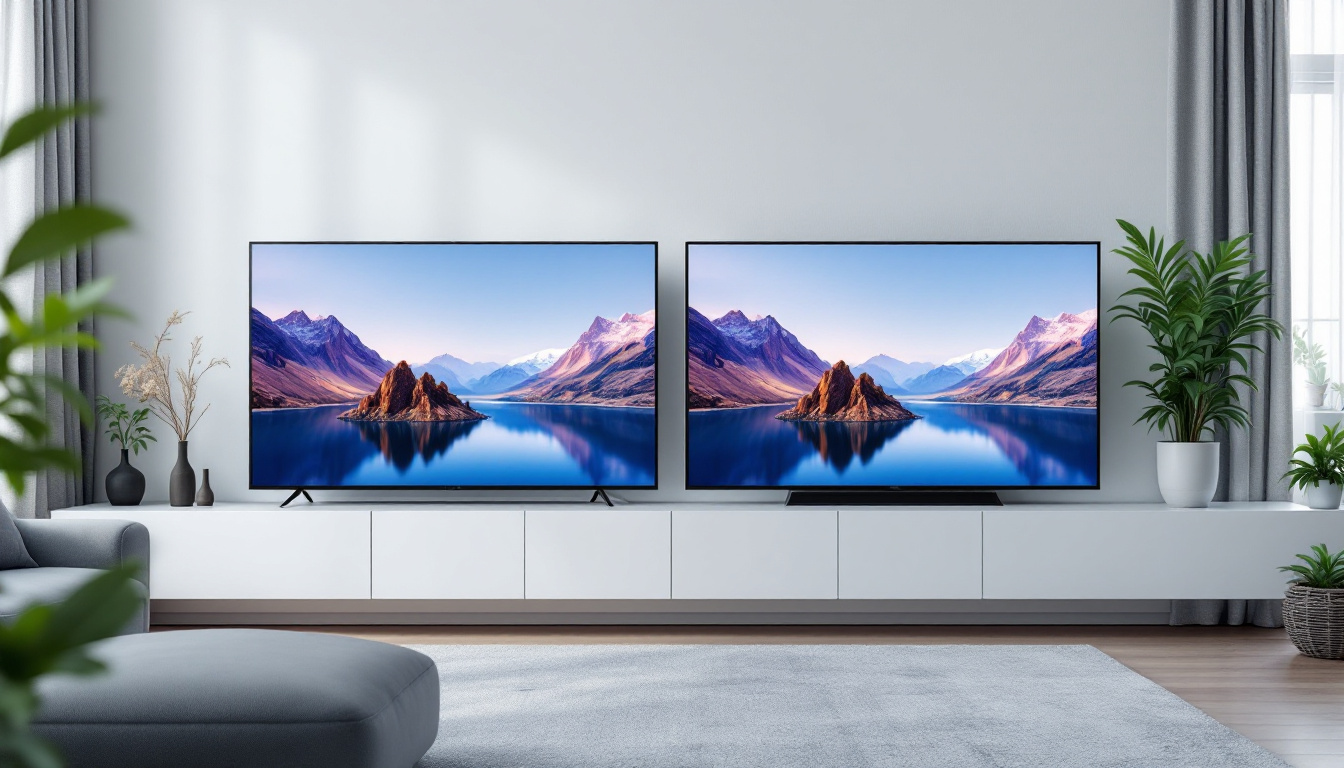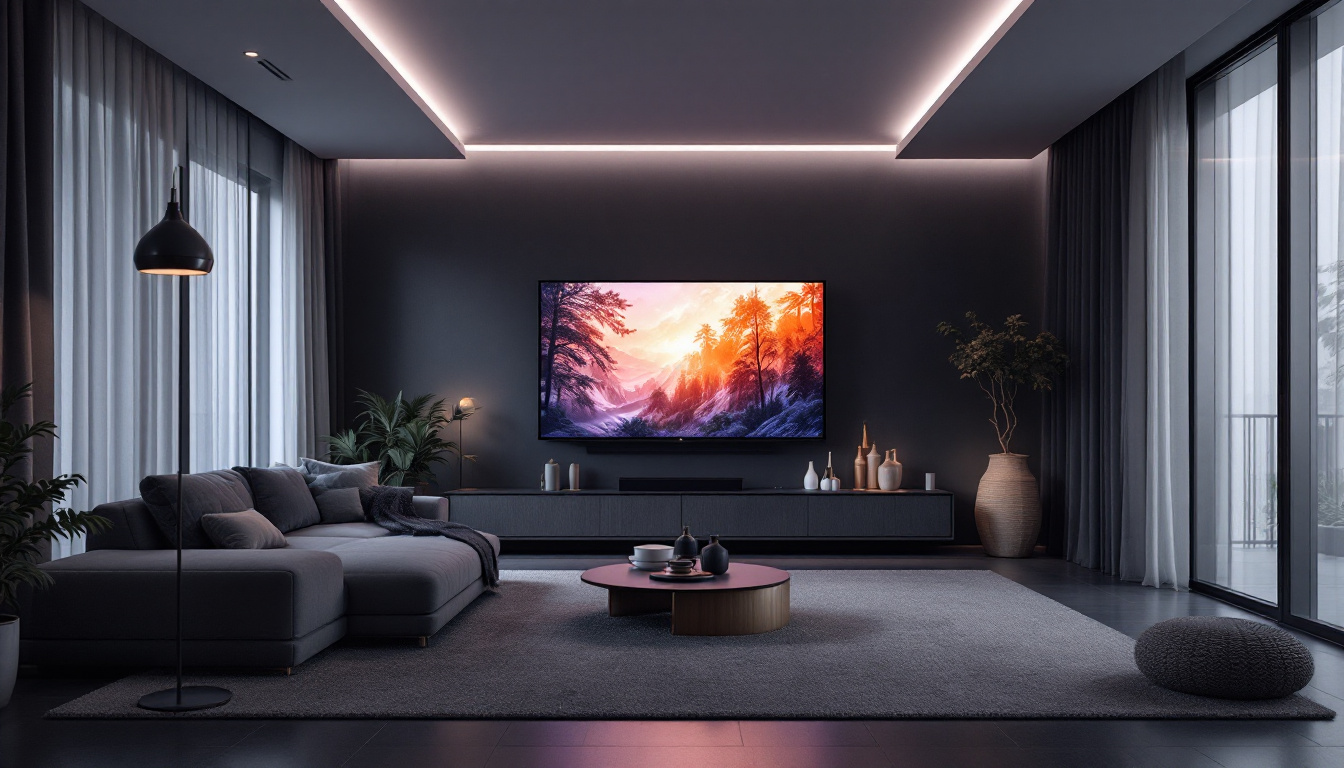In the world of modern display technology, the terms LCD, LED, and OLED are often thrown around interchangeably. However, each of these technologies has its unique characteristics, advantages, and disadvantages. Understanding the differences between them is crucial for consumers looking to make informed decisions when purchasing a new television, monitor, or other display devices. This article will delve into the intricacies of LCD, LED, and OLED displays, providing a comprehensive overview to help you navigate the options available.
Understanding LCD Technology
Liquid Crystal Display (LCD) technology has been a staple in the display industry for decades. It utilizes liquid crystals sandwiched between two layers of glass or plastic. When an electric current is applied, these crystals align to allow varying degrees of light to pass through, creating images on the screen. This innovative technology has revolutionized the way we view content, from television shows to video games, and has become an integral part of our daily lives.
How LCD Works
LCD screens rely on a backlight to illuminate the display since the liquid crystals themselves do not emit light. Early LCDs used fluorescent tubes for backlighting, but modern versions typically employ LED backlighting, leading to the term “LED-LCD.” This combination enhances brightness and energy efficiency while maintaining the benefits of LCD technology. The backlighting can be either edge-lit or full-array, with full-array providing more uniform brightness across the screen. Additionally, advancements in technology have led to the development of local dimming features, which allow certain areas of the screen to dim or brighten independently, improving contrast and overall picture quality.
Advantages of LCD Displays
One of the primary advantages of LCD displays is their affordability. They are generally less expensive to produce than OLED screens, making them a popular choice for budget-conscious consumers. Additionally, LCDs offer good color accuracy and are less prone to burn-in issues compared to OLEDs, which can suffer from image retention over time. Their durability also makes them suitable for a variety of applications, from smartphones to large-scale televisions. Moreover, LCD technology is continually evolving, with innovations such as high refresh rates and 4K resolution becoming more commonplace, providing users with an enhanced viewing experience that meets the demands of modern media consumption.
Disadvantages of LCD Displays
Despite their advantages, LCD displays have some drawbacks. The most notable is their limited contrast ratio. Since they rely on a backlight, blacks may appear more like dark grays, resulting in less vibrant images. Furthermore, viewing angles can be a concern; colors may shift or wash out when viewed from the side. This limitation is particularly evident in larger screens, where multiple viewers may not experience the same image quality. Additionally, while LCDs have made significant strides in refresh rates, they still lag behind OLEDs in terms of response time, which can affect fast-paced gaming and action scenes. As technology continues to advance, manufacturers are exploring ways to mitigate these disadvantages, ensuring that LCDs remain a competitive option in the ever-evolving display market.
Exploring LED Technology
LED (Light Emitting Diode) technology is often associated with LCD displays, as it refers specifically to the type of backlighting used in many modern LCD screens. However, it’s essential to differentiate between standard LED-backlit LCDs and true LED displays, which utilize individual LEDs for pixel illumination.
LED Backlighting in LCDs
In LED-backlit LCDs, the backlight consists of numerous LEDs that can be arranged in various configurations, such as edge-lit or full-array. Edge-lit displays use LEDs along the edges of the screen, while full-array displays have a grid of LEDs behind the entire screen, allowing for better control over local dimming and contrast.
True LED Displays
True LED displays, often referred to as MicroLED or MiniLED, represent a significant advancement in display technology. These displays use tiny, individual LEDs as pixels, allowing for greater control over brightness and color. This results in superior contrast ratios and vibrant colors, making them an exciting option for high-end displays.
Benefits of LED Technology
LED technology offers several benefits, including improved energy efficiency and longer lifespans compared to traditional LCDs. The ability to achieve deeper blacks and brighter whites enhances the overall viewing experience. Additionally, LED displays can be thinner and lighter, making them more versatile for various applications.
Delving into OLED Technology
Organic Light Emitting Diode (OLED) technology represents a significant leap forward in display innovation. Unlike LCDs and LED displays, OLED screens do not require a backlight. Instead, each pixel emits its own light, enabling true blacks and exceptional contrast ratios.
How OLED Works
OLED displays consist of organic compounds that emit light when an electric current is applied. This self-emissive nature allows for individual pixel control, resulting in stunning image quality. When a pixel is turned off, it produces absolute black, contributing to the display’s overall contrast and color richness.
Advantages of OLED Displays
One of the most significant advantages of OLED technology is its ability to deliver vibrant colors and deep blacks. This capability makes OLED displays ideal for watching movies and playing video games, where contrast and color accuracy are paramount. Additionally, OLED screens typically have wider viewing angles, ensuring that colors remain consistent even when viewed from the side.
Challenges of OLED Technology
Despite their impressive performance, OLED displays are not without challenges. One of the primary concerns is the risk of burn-in, where static images can leave a permanent mark on the screen. This issue arises from the uneven wear of organic materials over time. Furthermore, OLED displays can be more expensive to produce, resulting in higher retail prices for consumers.
Comparative Analysis: LCD vs. LED vs. OLED
When choosing between LCD, LED, and OLED displays, several factors come into play, including budget, intended use, and personal preferences. Each technology has its strengths and weaknesses, making it essential to consider what matters most to you.
Image Quality
In terms of image quality, OLED displays generally outperform both LCD and LED technologies. The ability to achieve true blacks and vibrant colors gives OLED a significant edge, particularly in dark environments. However, high-end LED displays with full-array backlighting can also deliver impressive image quality, especially for bright rooms.
Price Considerations
Price is often a deciding factor for consumers. LCD displays tend to be the most affordable option, making them accessible for a wide range of budgets. LED-backlit LCDs come next, offering better performance at a slightly higher price point. OLED displays, while providing superior image quality, are typically the most expensive, which may deter some buyers.
Longevity and Durability
When it comes to longevity, LCD and LED displays have a clear advantage. They are less susceptible to burn-in and can last for many years with proper care. OLED displays, while still durable, may require more attention to avoid potential image retention issues. However, advancements in technology are continually improving the lifespan of OLED screens.
Choosing the Right Display for Your Needs
Ultimately, the choice between LCD, LED, and OLED displays depends on individual preferences and usage scenarios. Here are some considerations to help guide your decision:
For General Use
If the primary use is for general viewing, such as watching television shows or browsing the internet, an LCD or LED display may be sufficient. These options provide solid performance at a lower price point, making them ideal for everyday use.
For Gaming and Movies
For gamers and movie enthusiasts, investing in an OLED display may be worthwhile. The superior contrast and color accuracy enhance the overall experience, making it a favorite among those who prioritize visual quality. However, it’s essential to consider the risk of burn-in, especially for static images.
For Bright Environments
In bright environments, LED displays, particularly those with full-array backlighting, tend to perform better than OLEDs. The brightness levels can counteract ambient light, ensuring a clear and vibrant picture. LCDs and LED-backlit screens are generally more suited for well-lit rooms.
The Future of Display Technology
The display technology landscape is constantly evolving, with innovations on the horizon that promise to enhance user experiences further. Emerging technologies such as MicroLED and advancements in OLED manufacturing are set to redefine what consumers can expect from their displays.
MicroLED Technology
MicroLED technology is gaining traction as a potential game-changer in the display market. By utilizing tiny, self-emissive LEDs, MicroLED displays can achieve the benefits of OLED without the risk of burn-in. This technology promises to deliver exceptional brightness, contrast, and color accuracy, making it an exciting prospect for the future.
Advancements in OLED
As OLED technology continues to mature, manufacturers are working to address its challenges. Improvements in materials and production methods are helping to reduce the risk of burn-in while enhancing overall durability. As these advancements take hold, OLED displays may become even more appealing to a broader audience.
Integration with Smart Technology
The integration of display technology with smart features is also on the rise. Smart TVs and monitors equipped with advanced connectivity options and built-in streaming capabilities are becoming increasingly popular. This trend is likely to continue, with future displays offering seamless integration with various devices and platforms.
Conclusion
In summary, the choice between LCD, LED, and OLED displays ultimately depends on individual needs and preferences. Each technology has its unique advantages and drawbacks, making it essential for consumers to weigh their options carefully. Whether prioritizing affordability, image quality, or longevity, understanding the differences between these display technologies can lead to a more satisfying purchase decision.
As technology continues to advance, staying informed about the latest developments will empower consumers to make choices that best suit their viewing habits and environments. Whether it’s a budget-friendly LCD or a high-end OLED, the right display can significantly enhance the overall viewing experience.
Discover Cutting-Edge LED Displays with LumenMatrix
As you consider the vast landscape of display technologies for your next purchase, let LumenMatrix illuminate your decision with our advanced LED display solutions. Embrace the future of visual communication with our diverse range of products, from Indoor and Outdoor LED Wall Displays to innovative LED Transparent Displays. LumenMatrix is committed to enhancing your brand’s visibility and creating immersive experiences that captivate and engage. Check out LumenMatrix LED Display Solutions today and step into a world where clarity and impact go hand in hand.

